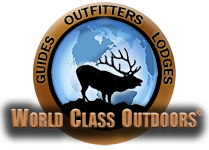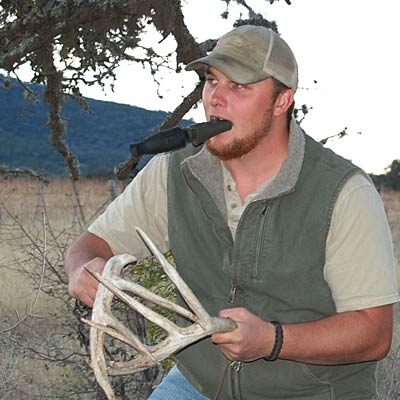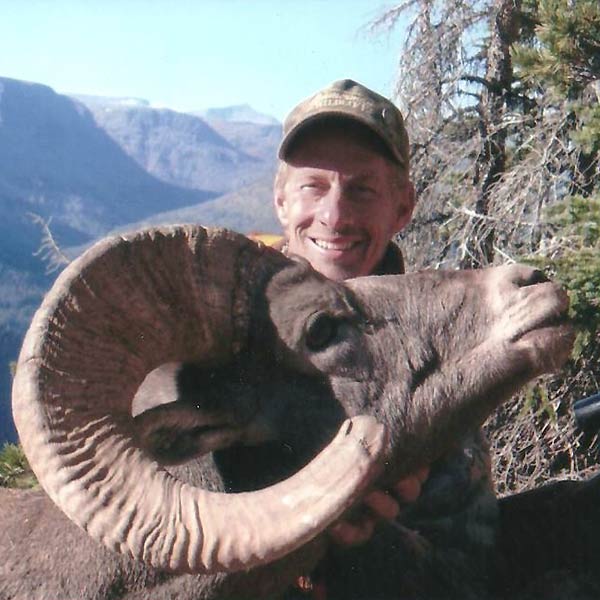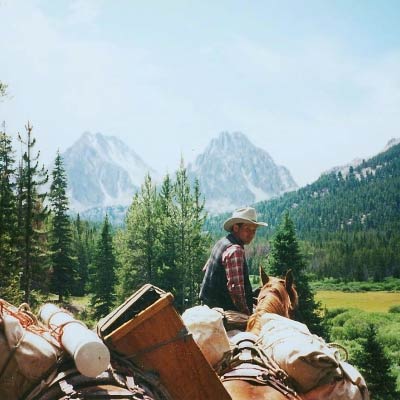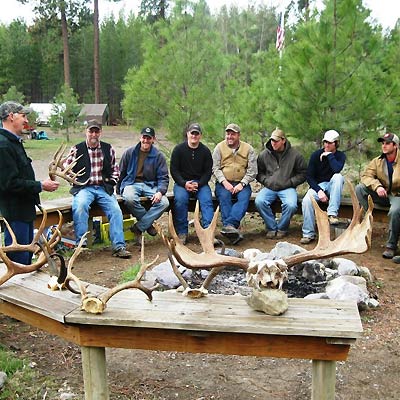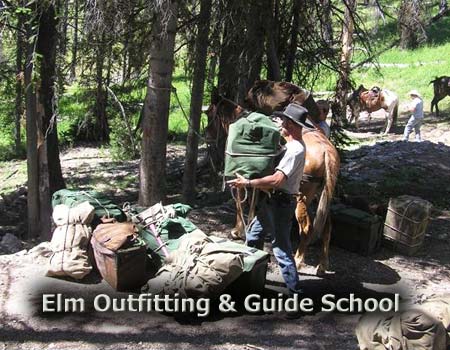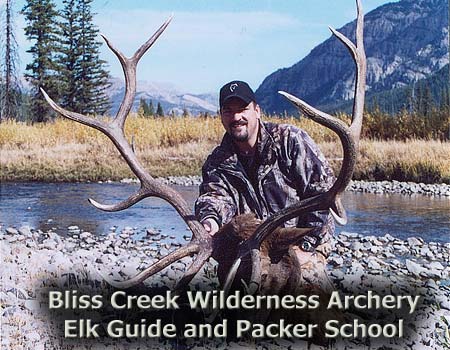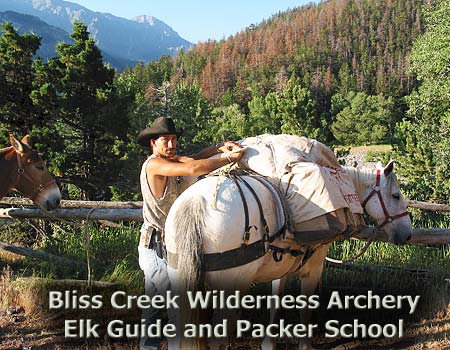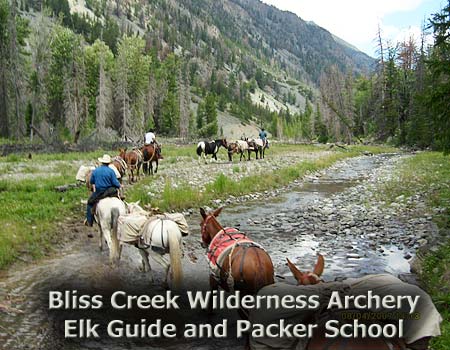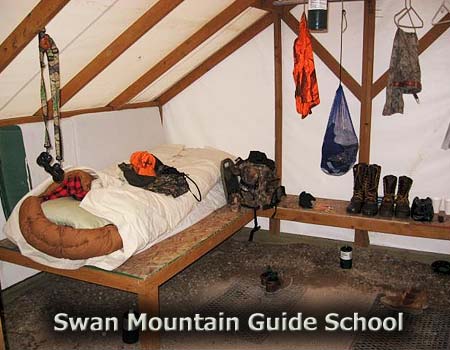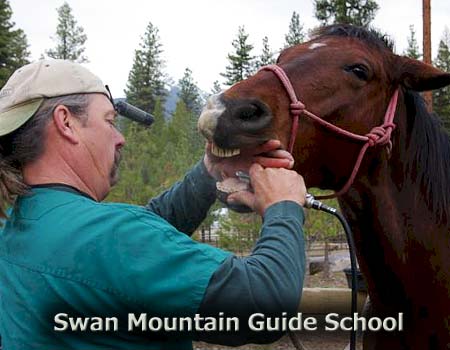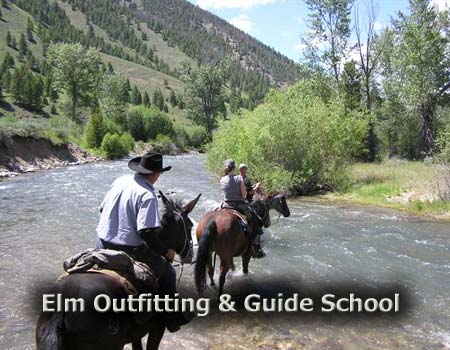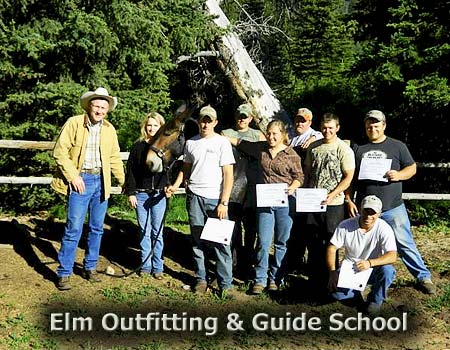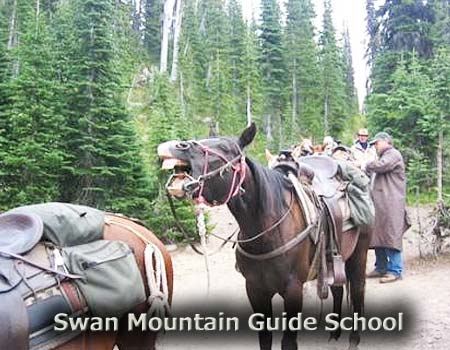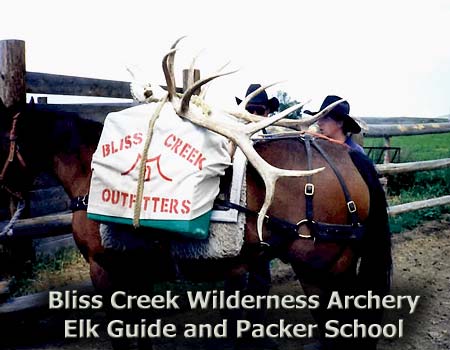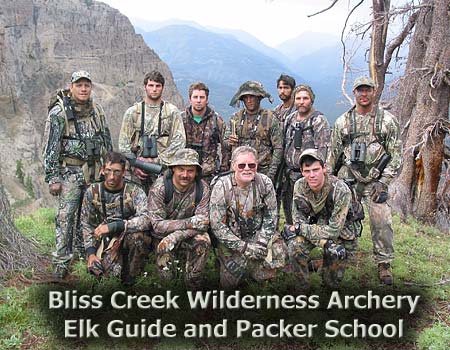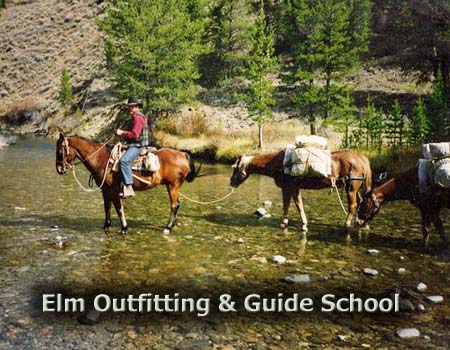Hunting Guide Schools
Live the Dream – Be a Pro Hunting Guide – Outfitter
A Day in the Life of a Big Game Hunting Guide, by Michael Knott, Program Director Elm Outfitting-Guide Training
Professional hunting guide and owner of Elm Guide School, Michael Knott, writes the following article about the pleasures and challenges of pro hunting guides and outfitters. If you are considering a career in the hunting industry or becoming a pro hunting guide, this is a great article to read!
Morning starts early for a guide especially the month of September here in the Northern Rockies. Around 3:30 AM. There are horses to catch, feed, water and saddle. Breakfast can be as early as 4:15 so bring your appetite! You will need it for the long day ahead. To get where you need to be by first light you must be out of camp and on your way well before 5:00. You are lucky as the first part of your ride will be up one of the major pack trails, so you point your trusty mount in the right direction and give him his head.
By 5:45 you reach your cut off trail that leads you up towards the top of the ridge. In the pre-dawn the trail is almost non existent so you must use your keen senses and the sky line to guide you. Taking it slow you pick your way up to where you will leave your horses. As you never know how the days hunt may go? You automatically take their bridals off and loosen their cinches some before tying them off and heading out the ridge. It may be well after dark before you are back. Mornings in the high country is truly seeing and experiencing God’s handiwork at its best! Add rutting and bugling elk to the picture, it quite the deal.
Guiding for clients is a big responsibility and you must always remember no matter what, safety is a must!
Quietly we navigate to an advantage point where we can hear and see a whole lot of country. You know the drainage well and it most often holds a good herd of elk so anticipation is high.
Mesmerized by the quiet we sit motionless and just listening for a bit. It’s a big watershed with many openings and has everything elk need, feed, water and good security.
As the night gives way to light we start glassing the closer parks. Nothing! You continue to scour the valley below, still nothing. You must be patient and thoroughly glass the openings one by one. Right now you are glad that you spent the little extra and picked up a good quality 10×42 optic’s, they sure are doing a fine job. Even in this low light they are gathering good intensity.
Finally you glass a few head that look to be heading towards the timber. Way down the drainage about two miles away you pick-up on some cow’s. Most likely it’s the tail end of a larger herd. You don’t spot any bulls but you are confident that they are there as it is the height of the rut.
Your hunter is a archery hunter so you must get in close. All likelihood they are heading to a bedding area high on a north facing bench about a mile above the park. You also know that the chances of getting there before the thermals change are nil. Not wanting to risk it we make plans for a late afternoon or evening hunt.
No good to go right into their bedding area. Work your way down bring your horses and take your time. Don’t get to close, about a third of a mile this side of the bedding area is close enough. Let the elk rest, you do the same. The air currents should be stable all afternoon but keep an eye on them.
If everything goes picture perfect you will hear a bull bugle by mid afternoon or before. You move in, set up and pull a nice 6 point bull past your hunter within 20 yards. He makes a clean broadside shot and recovers his bull within 100 yards. Giving you plenty of time for pictures, caping, field dressing, quartering, hanging, brushing it up and back to camp by 9:00 pm. Time to enjoy a good supper and by morning rested and ready to pack the bull back to camp.
It can come this easy but nine times out of ten it won’t. You can expect to put in some real long days and late nights. Miles and miles in the saddle. Setups that didn’t pan-out, bulls that hangup on you, elk-less hours sitting over wallows and several other misfortunes along the way.
Always remember that your worst day of elk hunting will be far superior than the best of days down amongst deprived flat-landers!
